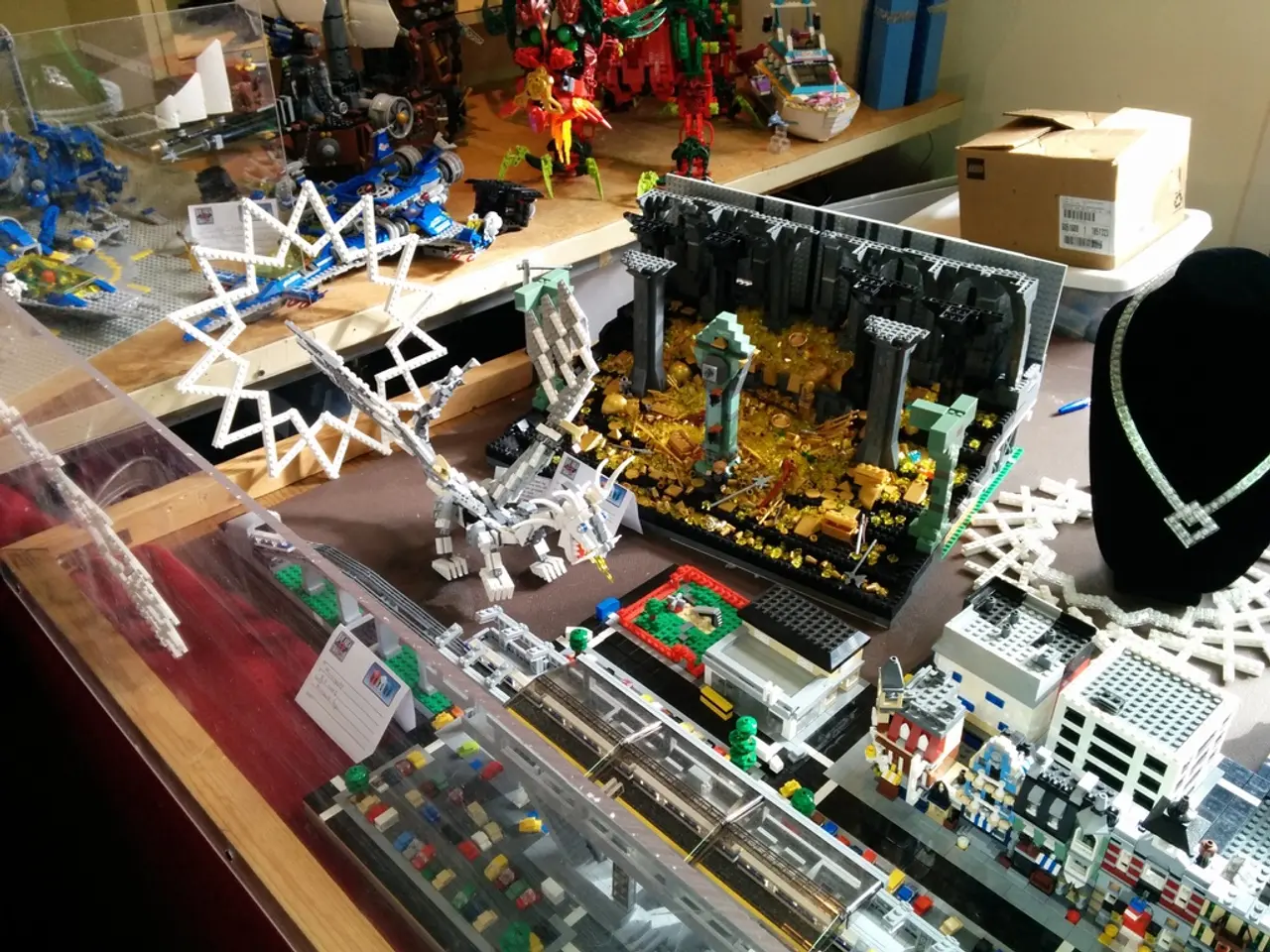Entity Labeling Model Training in Natural Language Processing (NLP)
In the realm of Natural Language Processing (NLP), a custom named entity chunker has been developed using the IEER corpus and Python's NLTK library. This article outlines the key steps involved in building this chunker, along with the associated challenges.
### Building the Chunker
1. **Understanding the IEER Corpus Structure**: The IEER corpus, while containing manually annotated named entity trees, lacks POS-tagged tokens and sentence segmentation, adding preprocessing complexity.
2. **Preprocessing Data**: Convert the IEER chunk trees into the IOB tagging format, a standard for sequence labeling tasks. Use the utility function `ieertree2conlltags(tree, tagger=nltk.pos_tag)` to convert IEER trees into triplets of `(word, POS tag, IOB tag)` for training.
3. **Training the Chunker**: Implement a custom chunker class (e.g., `ClassifierChunker`) that uses a supervised classifier such as Naive Bayes or other machine learning models. The classifier learns to assign IOB tags to tokens based on features extracted from the text.
4. **Evaluation and Usage**: Evaluate the chunker on a test set from IEER or similar annotated datasets. Use the chunker to predict named entities in new text by tagging tokens with named entity labels.
### Challenges Associated
- **Lack of POS tags and sentence boundaries**: IEER corpus requires additional preprocessing to generate POS tags and segment sentences, complicating the training pipeline.
- **Domain specificity**: Pre-trained models may miss domain-specific entities, so customizing chunkers is necessary but requires sufficient annotated data.
- **Complexity of annotation**: IEER annotations are hierarchical trees, which need conversion into a flat tagging scheme (IOB), which can introduce noise or errors if not handled carefully.
- **Feature engineering**: Deciding on the right features (lexical, syntactic) for the classifier is critical for performance but can be nontrivial.
- **Model limitations**: Simple classifiers like Naive Bayes may struggle with complex entity boundaries or nested entities that occur in IEER.
- **Transparency vs. performance tradeoff**: Custom chunkers allow explainability and domain adaptation but generally lag behind state-of-the-art neural models in accuracy.
### Summary Table
| Step | Description | Challenge | |-----------------------|-------------------------------------------------|----------------------------------------------| | Preprocessing | Convert IEER trees to IOB tagging with POS tags | Requires sentence splitting and POS tagging | | Feature Extraction | Extract features for classifier | Selecting effective features is tricky | | Model Training | Train classifier (e.g., Naive Bayes) | May not capture complex context | | Evaluation | Test chunker on held-out IEER data | Limited data and noisy conversions | | Application | Use chunker on raw text | Domain shifts may reduce accuracy |
### Additional Notes
- While NLTK provides utilities to build and train custom chunkers, more sophisticated methods (neural nets, transformers) are often used in modern NER but require different frameworks than classical NLTK chunking.
- Custom chunkers are valuable when explainability and domain adaptation are priorities.
In conclusion, building a custom IEER-based named entity chunker in Python nltk involves converting chunk trees to IOB format, training a classifier-based chunker, and addressing challenges primarily around data preprocessing, feature design, and model limitations inherent in traditional chunking approaches. The IEER corpus, despite its small size and noise, provides structured annotations that make it suitable for prototyping and experimentation.
In the realm of home-and-garden, one might analyze the structure of a specific lifestyle corpus, like the IEER corpus, to study sustainable living and technology trends within the house and garden domain. For instance, the development of a custom named entity chunker for this corpus could help identify entities related to eco-friendly equipment, smart technology, and organic gardening practices.
In the world of data-and-cloud-computing, understanding the challenges faced in building a named entity chunker for the IEER corpus could provide valuable insights for developing similar systems. These challenges, such as the lack of POS tags and sentence boundaries, complex annotation, and feature engineering, are not exclusive to the home-and-garden domain and can be applied to build more sophisticated chunkers for other domains as well.




